 When you get to the AAA level and take a look at each individual player they are generally grouped into one of two categories: quad-A, or legitimate big league prospect-in-waiting. Someone like Trevor Crowe has moved into the quad-A camp, whereas someone like Carlos Santana is obviously a big-league prospect in waiting. The thing we want to look at, is why they are viewed this way? Is it their minor league track record? Their standing and reputation within the organization? It’s hard to identify, and even harder to quantify, so I will try to take an in-depth look at the 2010 Columbus Clippers and see what, if anything, we can discern about what to expect.
When you get to the AAA level and take a look at each individual player they are generally grouped into one of two categories: quad-A, or legitimate big league prospect-in-waiting. Someone like Trevor Crowe has moved into the quad-A camp, whereas someone like Carlos Santana is obviously a big-league prospect in waiting. The thing we want to look at, is why they are viewed this way? Is it their minor league track record? Their standing and reputation within the organization? It’s hard to identify, and even harder to quantify, so I will try to take an in-depth look at the 2010 Columbus Clippers and see what, if anything, we can discern about what to expect.
Starting Rotation:
Carlos Carrasco, Jeanmar Gomez, Scott Lewis, Yohan Pino, Hector Rondon, Jeremy Sowers
This is the first time I can remember the Indians having 3 legitimate big league rotation prospects at the AAA-level to start the season. Carrasco, Rondon and Gomez all are likely to make many starts for the Tribe over the next few years, albeit at very different levels of expected performance. Compare this to last year when the starters were David Huff, Aaron Laffey, Tomo Ohka and Kirk Saarloos and there is reason to be excited. Huff was the only real rotation prospect, even though Laffey is likely to continue to get spot starts here and there until his arbitration years are up and the Indians let him go. Bottom line, like the rest of the organization: the Clippers have much better pitching prospects and pitching depth.
Major League Outlook:
Carrasco and Rondon are expected/hoped to perform in the 2/3 starter range and provide consistently winnable starts for the duration of their time with the Tribe. Carrasco and Rondon have fringe-#1 potential, but Carrasco needs to refine his approach and tighten up his breaking ball. Rondon needs to develop a big league out-pitch, but his fastball and command are already ‘plus’-level.
The hope for Gomez is probably more in line with being an above average 4/5 on a title contending team. He has a good approach, pounds the zone, and has three fringe-average to average pitches. However, he just doesn’t have the stuff to project much higher. Lewis, Pino and Sowers are all your classic AAA organizational fillers that will be called upon when a spot start is required or long-relief is needed. They are replacement level and essential to every small-market team because they are adequate injury insurance and cost the Major League minimum. They are like chewed-up gum; not independently valuable on their own, but having them on hand when there is a leak is worthwhile and cost-effective in the short-run.
Stat Persistency:
Forget the back of that baseball card, I want the truth. We all know, to some degree or another, that certain baseball stats are more worthwhile than others. With that being said, let’s start off by repeating the following: “W-L records mean nothing unless you are referring to the standings” (or unless you are in salary arbitration, or voting for the Cy Young). The same can probably be said for ERA and a whole slew of other stats.
One stat that is very worthwhile; however, is Fielding Independent Pitching (FIP)1 which is a quick calculation used to assess a pitchers true skill level without worrying about the variability of team defense. The components of FIP are generally good indicators of success and comprise of HR’s, BB’s, and K’s. They are completely controlled by the pitcher-batter interaction. Home Runs are extraordinarily dependent on how many fly balls a pitcher yields, so having a good K/9 and a good GB% are wonderful at eliminating the long-ball. Let’s look at the rate stats of the three top guys throughout their various careers and see if we can glean some kind of look into what to expect this year and beyond.
Carlos Carrasco – Career Minor League Stats
| IP | WHIP | GB%2 | HR/9 | BB/9 | SO/9 | SO/BB | FIP | ||
| 2004 | Rk | 48.0 | 1.417 | * | 0.4 | 2.8 | 6.4 | 2.27 | 3.26 |
| 2005 | A-A--Rk | 83.0 | 1.735 | * | 2.1 | 3.7 | 6.5 | 1.76 | 5.96 |
| 2006 | A | 159.3 | 1.054 | * | 0.3 | 3.7 | 9.0 | 2.45 | 2.92 |
| 2007 | AA-A+ | 140.0 | 1.300 | 42% | 1.1 | 4.4 | 6.6 | 1.50 | 4.78 |
| 2008 | AA-AAA | 151.3 | 1.348 | 49% | 0.8 | 3.4 | 9.2 | 2.67 | 3.50 |
| 2009 | AAA | 157.0 | 1.236 | 49% | 1.0 | 2.6 | 8.5 | 3.29 | 3.58 |
| Career TOTAL | 738.7 | 1.300 | 47% | 0.9 | 3.5 | 8.0 | 2.3 | 3.90 | |
| 2010 | PECOTA proj | 100.0 | 1.460 | 31% | 1.08 | 3.6 | 7.1 | 2.0 | 4.4 |
These stats, like everything with Carrasco, are promising (when looked at independently) and frustrating (when you remove the blinders and look at the results) at the same time. Most of his rate stats are above average, a little heavy on the walks, but he has been young for his level at every stop so some of those can be chalked up to immaturity, both physical and mental. The hope is that the walks go down once he settles in at AAA for an extended period. Then if the rest of the skills stay where they’re at, everything else is there to succeed: good K-rates, he induces enough GB’s (career GB% of ~47%) to avoid high HR totals, and obviously he is durable as he has been going a consistent 150 innings for the last 4 seasons.
Bottom line: Carrasco will likely struggle in the Majors this year to fulfill his destiny of becoming a legitimate mid- to top-of the rotation starter. His PECOTA projection bears this out as well. I think he will not get quite 100 innings in the majors and I think he will keep his GB% closer to his historical average, but the BB’s (and K’s) will probably remain the same unless he demonstrates some increased control at AAA first.
He is still only 23 and will be young for the league again and very young if/when he pitches for Cleveland. Looking at his season to season FIP, one can’t help but be excited. He just keeps getting better at combining HR prevention, BB avoidance and punching guys out as he moves up leagues. He may not be taking the typical prospect route of SO’ing everyone at the lower levels while BB’ing guys like crazy and then gaining control as he matures, but he is finding ways to improve. I am just going to preach patience while I cross my fingers he figures out a way to bring the walks down and that he is able to get his head on straight enough to let all the things he does well translate into a successful big league career.
Hector Rondon – Career Minor League Stats
| IP | WHIP | GB%2 | HR/9 | BB/9 | SO/9 | SO/BB | FIP | ||
| 2006 | Rk | 52.7 | 1.23 | * | 1.0 | 0.5 | 5.5 | 10.7 | 3.64 |
| 2007 | A | 136.0 | 1.25 | 46% | 0.9 | 1.8 | 7.5 | 4.2 | 3.38 |
| 2008 | A+ | 145.0 | 1.19 | 42% | 0.7 | 2.6 | 9.0 | 3.5 | 3.14 |
| 2009 | AAA-AA | 146.3 | 1.18 | 41% | 0.7 | 1.8 | 8.4 | 4.7 | 2.90 |
| Career TOTAL | 480.0 | 1.21 | 43% | 0.8 | 1.9 | 8.0 | 4.2 | 3.19 | |
| 2010 | PECOTA proj | 130.0 | 1.43 | 9.8 | 1.0 | 3.0 | 7.1 | 2.3 | 4.13 |
Hector Rondon. Oh my, Hector Rondon. I am selfishly happy he is avoiding national attention as a prospect. This way he can continue to focus on refining his secondary pitches and dominating everyone in his path with his plus-fastball and plus-control while avoiding the hype that now comes along with recognized prospects. If the Indians front-office gets really lucky, they can hope for him to remain out of the spotlight until he has already put in some good Major League work and then sign him on for an under-market contract that won't be inflated by the number of headlines he generated as a prospect.. Then again, I just looked behind my cart and I can see the horse in the distance, so let's look at the stats and see what we find.
Ok, back on track: look at his numbers! His FIP has been going straight down each season, despite taking the stratospheric ascent to AAA in 3.5 seasons, being extremely young at every level and enduring an aborted starter-to-reliever switch in the middle of 2009. Drilling down past the impressive FIP numbers: Hits and HR’s are going down because he has increased his GB% and SO/9 and none of this has come at the expense of control which he has kept in top shape by allowing fewer than 2 free passes per 9 for his career. The only season he has registered with above 2 BB/9 was 2008 at Kinston. Even this is explainable as the organization challenged him to throw more off-speed pitches and he even weathered that storm well by turning the ship around mid-season.
Bottom Line: His PECOTA projection is obviously not great, but this is due to the fact that he is probably a year away from being a legit Major League starting option and these numbers are supposedly what he could do in the majors today. He will get innings at Cleveland at some point in the season due to where the organization is in the rebuilding cycle, but his development at AAA and his acclimation in Cleveland will get him primed for 2011. He has almost everything you could ask for: a solid & improving track record, increasing strike out rates as he hones his plus-pitches, and a seemingly unending supply of control and durability. On top of all of these wonderful things I can say about Hector, perhaps this is the best part: he will pitch the entire season between AAA-ML at age 22.
Jeanmar Gomez – Career Minor League Stats
| IP | WHIP | GB%2 | HR/9 | BB/9 | SO/9 | SO/BB | FIP | ||
| 2006 | Rk | 54.3 | 1.14 | * | 0.3 | 2.0 | 5.6 | 2.83 | 3.42 |
| 2007 | A | 140.6 | 1.40 | 49% | 1.2 | 2.9 | 6.0 | 2.04 | 4.78 |
| 2008 | A+ | 138.3 | 1.45 | 51% | 0.9 | 3.0 | 7.2 | 2.39 | 4.18 |
| 2009 | AA-A+ | 147.3 | 1.22 | 53% | 0.8 | 2.7 | 7.6 | 2.76 | 3.66 |
| Career TOTAL | 491.6 | 1.34 | 51% | 0.9 | 2.8 | 6.8 | 2.38 | 4.12 | |
| 2010 | PECOTA proj | 129.0 | 1.60 | 41% | 1.3 | 3.9 | 6.1 | 1.55 | 4.91 |
Jeanmar Gomez is an interesting case because he is pretty well known as far as what his abilities are: above average control, fringe-average repertoire, well above-average ‘feel’ for pitching and pretty predictable from year to year. The interesting part of Gomez (and many other prospects in baseball) is the debate on how valuable a guy like him actually is. He is going to produce lots of slightly-above league average innings, but he will probably get lit up a few times as well. He’s not a huge strikeout guy, he doesn’t give up an inordinate amount of HR’s because of his historically high (and improving) GB% and, like Carrasco/Rondon, he’s very durable. What is this worth to the Indians? What is this worth to other teams?
The answer is probably that he’s worth more to Cleveland because guys that project to be solid big-leaguers, but not superstars, rarely get the league-wide value they deserve as prospects. He can pitch in the 4/5 spots for several years and give the Indians lots of chances to win games even if he doesn’t win too many on his own. Having your farm system produce these guys, rather than signing the Scott Elarton’s of the world is something that small-market teams must do in order to conserve their resources.
Bottom Line: His rate stats are extremely consistent, in particular his HR and BB rates which have been the same since his first full season in 2007. He has never gotten the reputation of having the makings of ever becoming anywhere near a #3 on a playoff-team, but his increasing K-rates coupled with an increase in his GB% as he has moved from Lake County up to Columbus. If things go perfectly, and he can demonstrate his current rate stats: low-50’s GB%, 7+ K/9 and fewer than 3 BB/9 at the AAA level, he has a legitimate shot at turning into something more than what we all think he will be. However, like all young pitching prospects, things often don’t go perfectly, and the Indians would be very happy if they had a Talbot-esque guy on their hands in a couple years.
Barriers Faced: Today and Tomorrow
Carrasco and Rondon likely have the repertoire and organizational standing to pitch their way into rotation and stay there, so long as they are close to their usual selves. They could relegated to spot start/long-relief duty if everything else goes right in terms of the current staff and higher-upside prospects. Of course, the likelihood of Masterson and Carmona reining in the BB’s, Hagadone forcing management’s hand by having a huge (huge) breakout year, and Huff/Talbot cleaning up their peripherals isn’t very high. They should be in the Cleveland rotation by the end of the year after Westbrook gets dealt and should stay there throughout their arbitration years and beyond if an extension is merited.
Compared to Rondon and Carrasco, Gomez has less margin for error in terms of staying with the big league club long-term. His stuff isn’t as impressive, his ceiling is considerably lower and the Indians have comparable players in the cupboard, though not as young as Gomez. His biggest problem will ultimately be the wealth of young pitching talent the Indians have in the lower-levels. In no particular order, Jason Knapp, Zach Putnam, TJ House, Connor Graham, Scott Barnes, Kelvin De La Cruz, Alex White and Joe Gardener could all have a breakout season and quickly insert themselves as the heir apparent to the rotation spot that looks open to Gomez.
It’s an exciting time for Indians fans, whether the everyday big-league fan knows it or not. The fun part for all of us reading IPI and following along with all these youngsters is seeing how everything pans out.
1- FIP calculated using standard FIP formula = ([(13*HR)+(BB+HBP-IBB)*3-(K*2)]/IP) + 3.2. Where HBP data was not available, a HBP/IP career-average was taken and multiplied by # IP for the missing season.
2- GB% for Minor Leaguers wasn’t available prior to 2007
Stats taken from:
- www.baseballprospectus.com
- www.thehardballtimes.com
- www.fangraphs.com
- www.baseball-reference.com









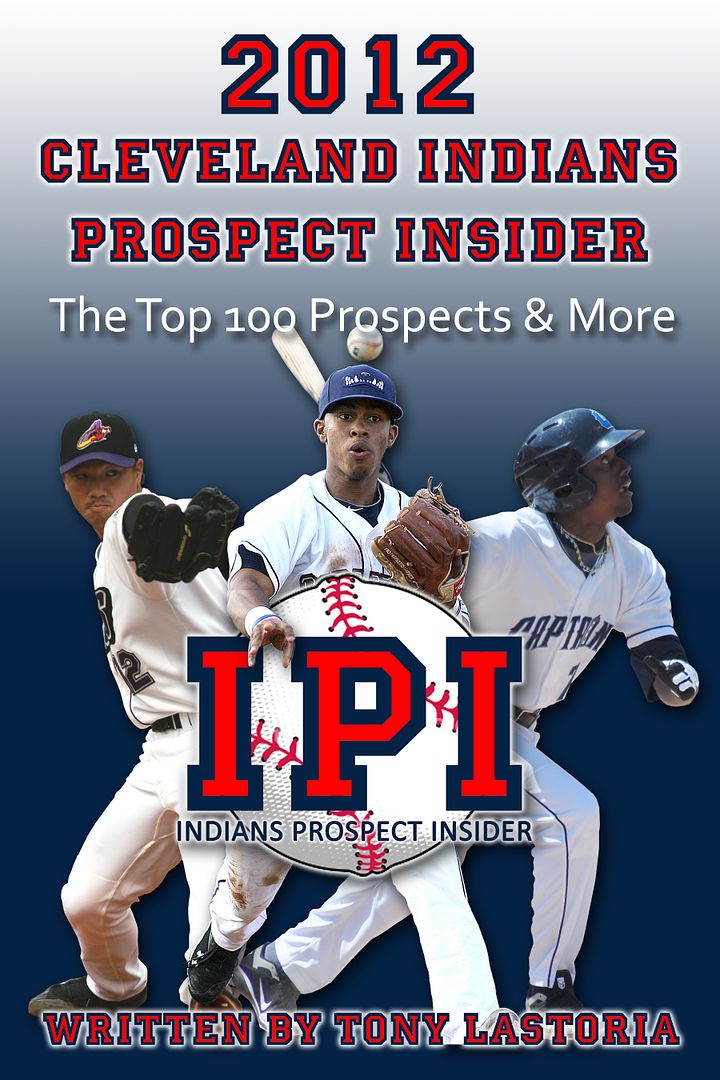
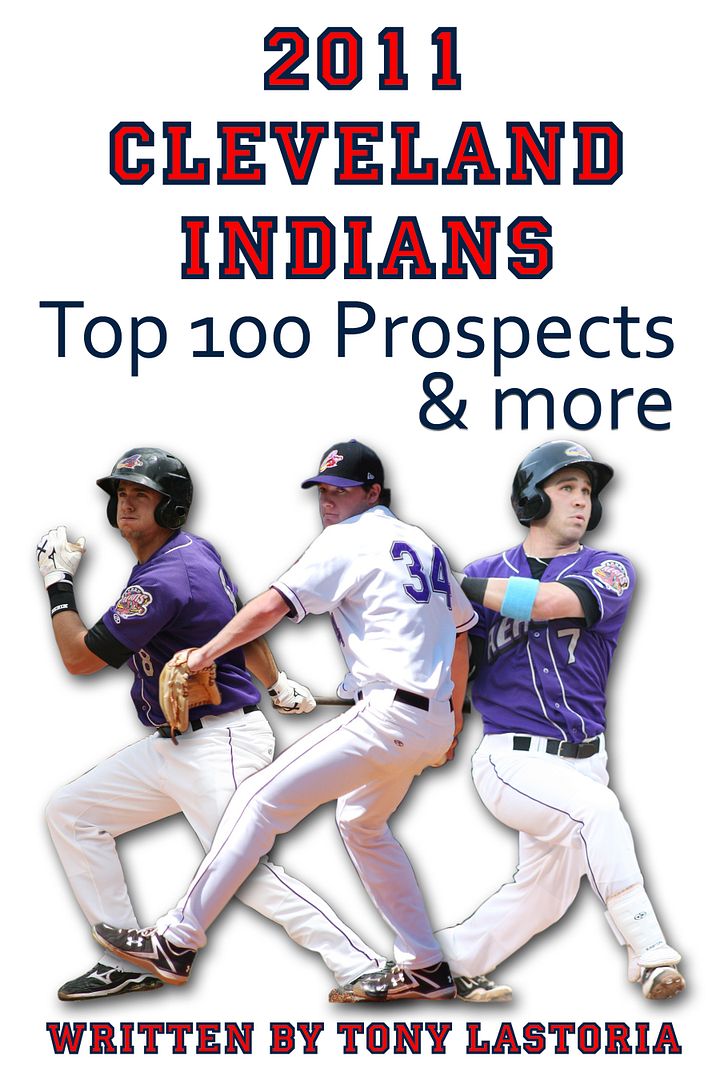
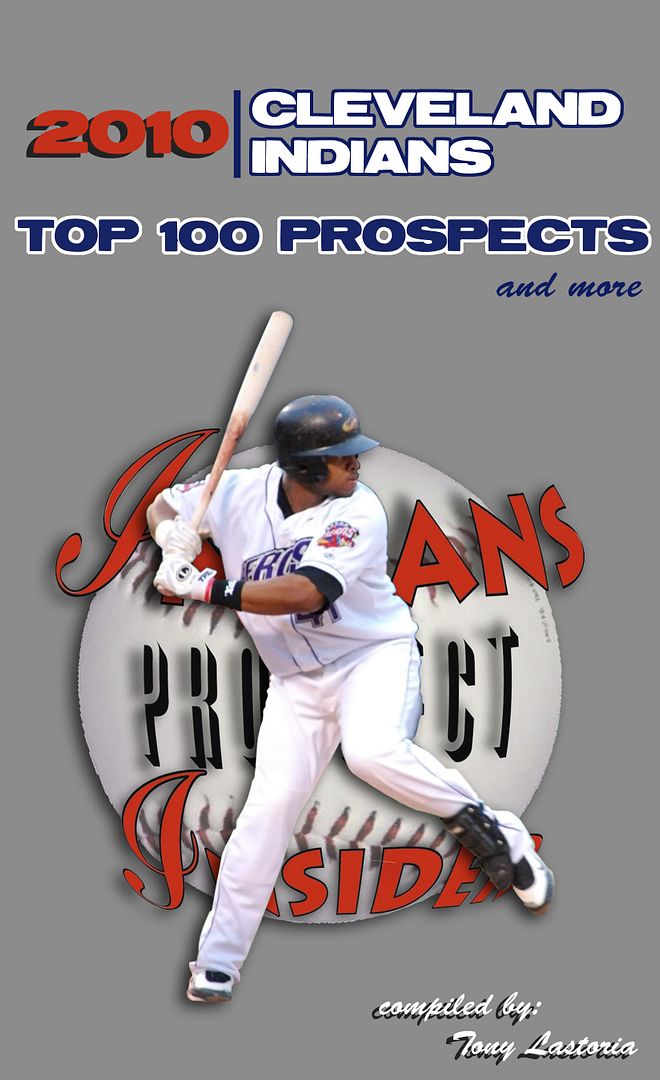
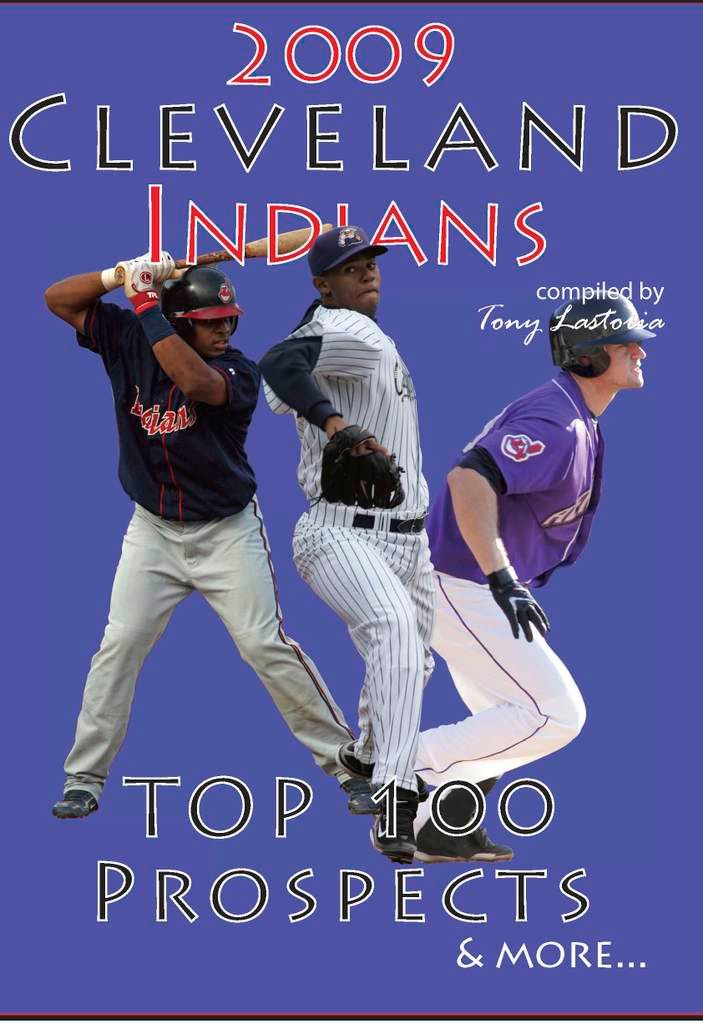
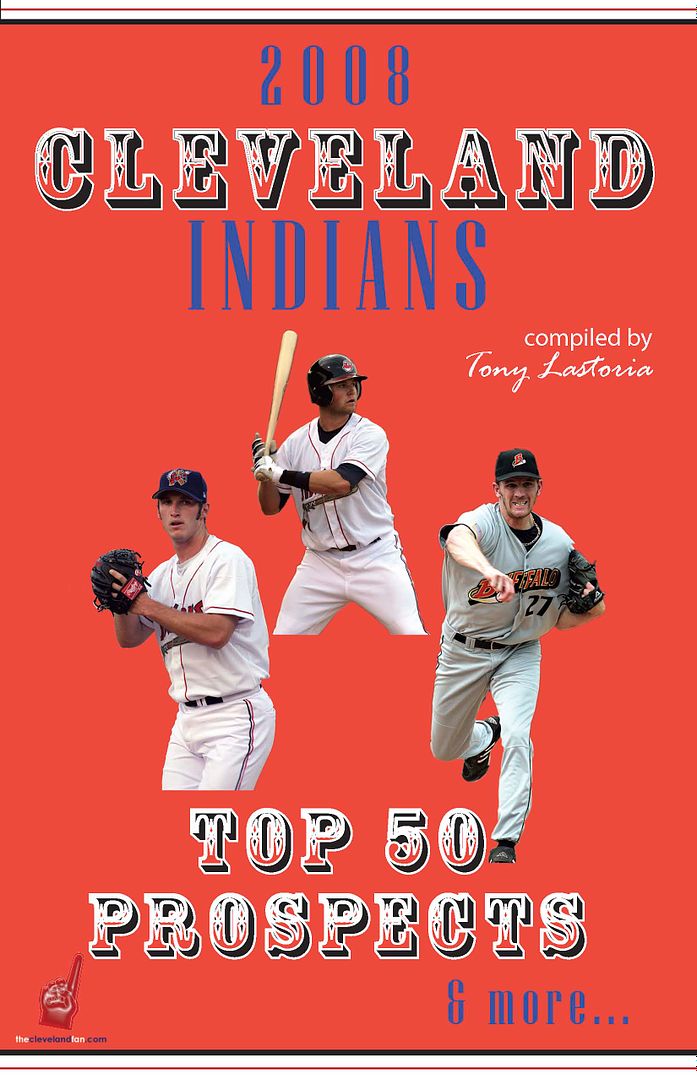
 Everything on this site is free, but for those interested in making any monetary contributions to help support the stability and growth of this site please click on the "Donate" button below.
Everything on this site is free, but for those interested in making any monetary contributions to help support the stability and growth of this site please click on the "Donate" button below.


4 comments:
I always thought that Lewis was better than just mere filler, is this really all the more upside he has? I mean the guy was hurt last year and has a chance to really prove himself this year.
One of the biggest problems with Lewis is exactly what you said: he was hurt last year. Pitcher's just don't bounce back very often from season-ending injuries that aren't TJ surgery.
However, a look at his stats certainly would lead one to believe that the Indians have something special on their hands. He actually has very good rate stats, sure they have been getting slightly worse as he has aged and the career totals are inflated due to him being a college pitcher that tore up everything A+ and below for 130+ innings. But, he maintained solid peripheral stats into AAA and won 4 games at the major league level, right?
Wrong. Granted, it is probably an oversight of mine to not include him amongst the breakout candidates that could unseat Jeanmar's future rotation spot, but I feel slightly more justified doing so because Lewis will turn 27 this season and he has a total of 28 1/3 major league innings. He racked up 4 wins in a good stretch in 2008, but even those came with a sub-6 K/9, and he has never had a GB% better than 40% at any level. The bad GB% will never go away, so he needs to seriously bump up that K/9 if he is going to avoid giving up tons of HR's. I just don't see his stuff becoming Big League-dominant following an injury.
Putting the age, the injury, the low ML K-rate, the consistently low GB% and the presence of numerous higher upside, uninjured and younger prospects leads me to believe that Lewis, while a great guy and a possible 4/5, is likely to go by the wayside as the Indians build themselves into a contender.
Yikes! For some reason I had thought he was younger, though isn't 27 the typical break out age for most players? (Fangraphs has shown this to be true at least for batters, not sure on pitchers).
But most MiLB pitchers notice a sharp decline in their first MLB season in their K rate and 28.1 IP is such a small sample size for a guy looking to be a starter.
Though I am more worried about his injury now that I realize how old he really is. I'd still like to see him as at least a reliever in Cleveland again.
The problem with Lewis is that his numbers are probably inflated along each stop in the minor leagues because he was old for each level.
There is lots of debate about "peak" years and 27 is the number that gets the most publicity because this is the number that Bill James settled on for position players. However, other studies have determined that its anywhere from 25 (defensively) to 29 (pure hitting) and can be even a year later for pitchers. This gives some reason to be optimistic for Scotty, but the facts can't be ignored: he has had injury problems, he was never identified as having great "stuff" and he posted good, but not great numbers at minor league stops where he was older (and college polished) than his opponents.
If he really works on that curveball (and up's his K-rates), he could become an effective reliever, but those high contact rates and fly ball tendencies scare me away from relief duty for the most part. I want Lewis to succeed and there is a chance he can become a part of the Tribe's future, I just don't see it as a likely outcome.
Post a Comment